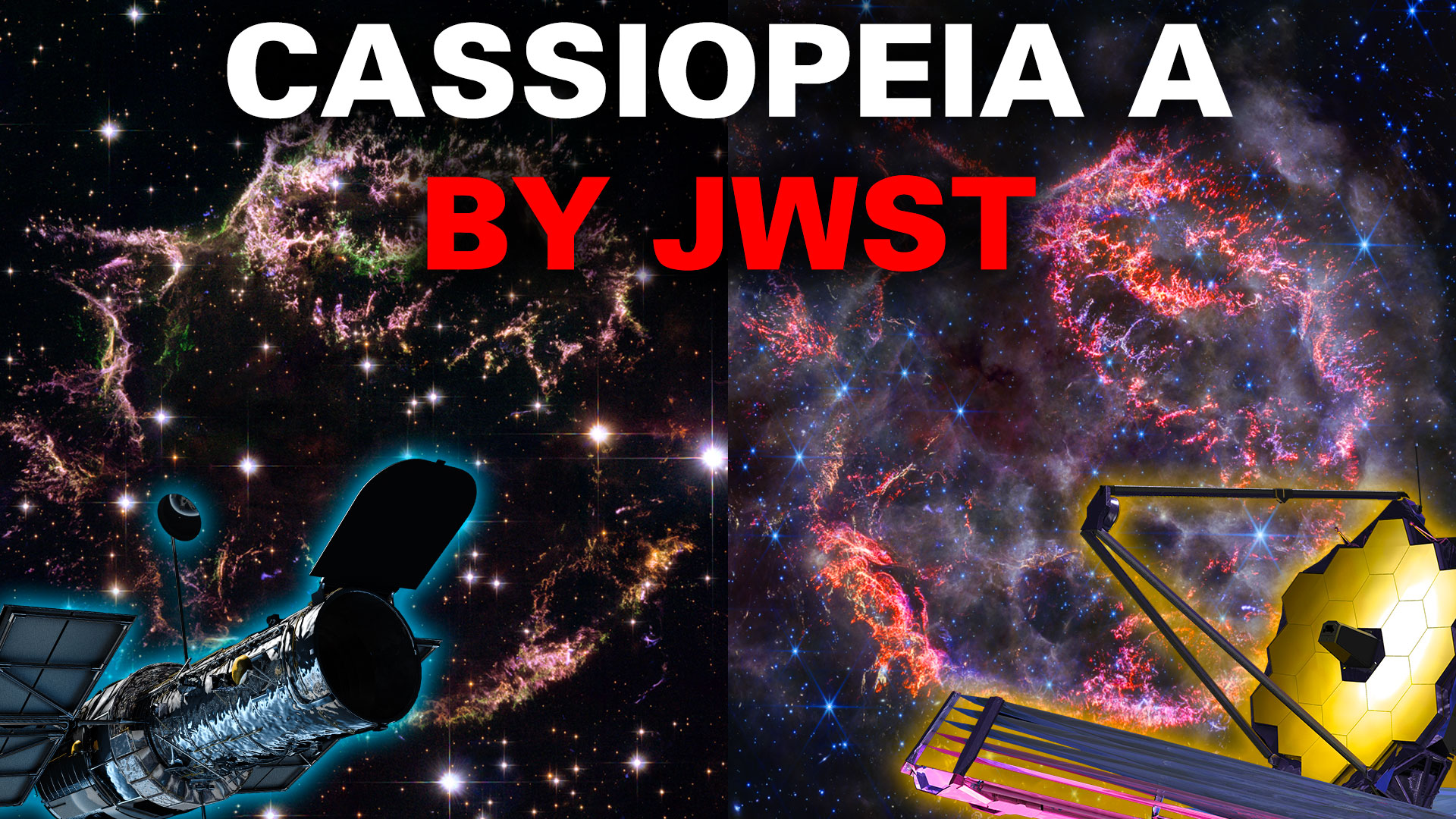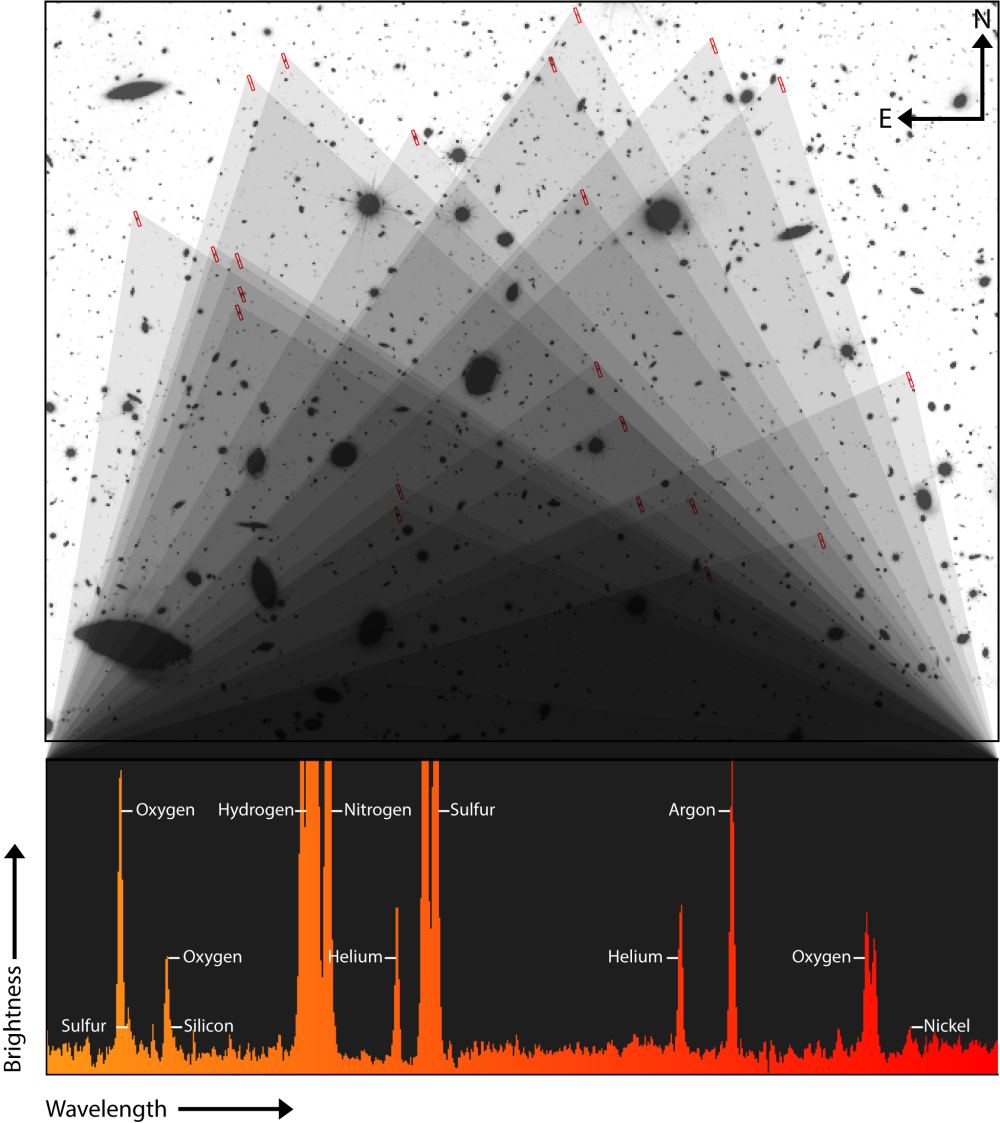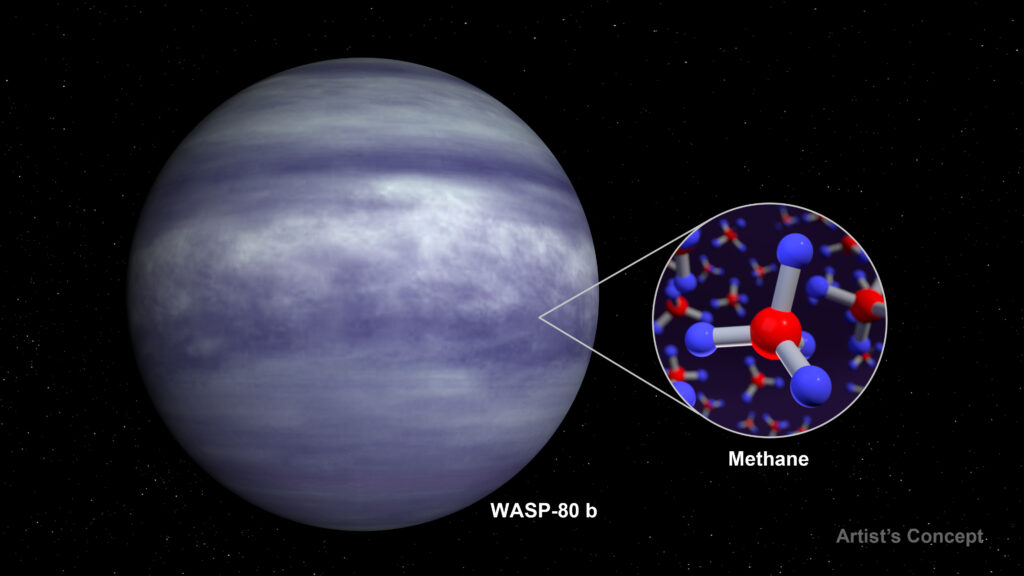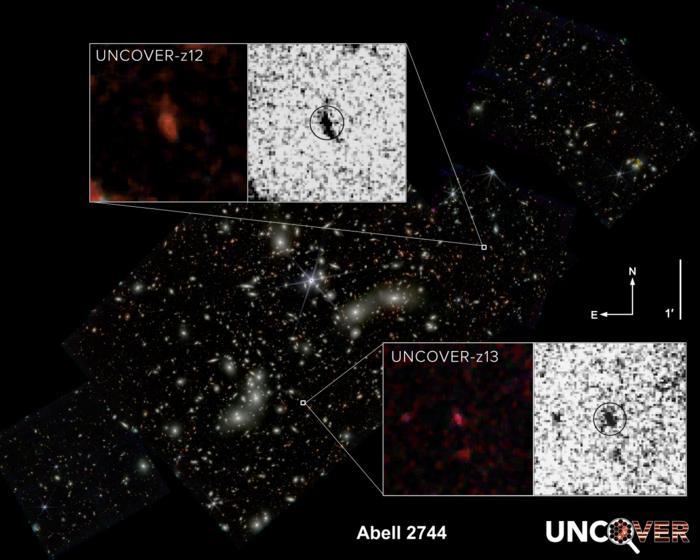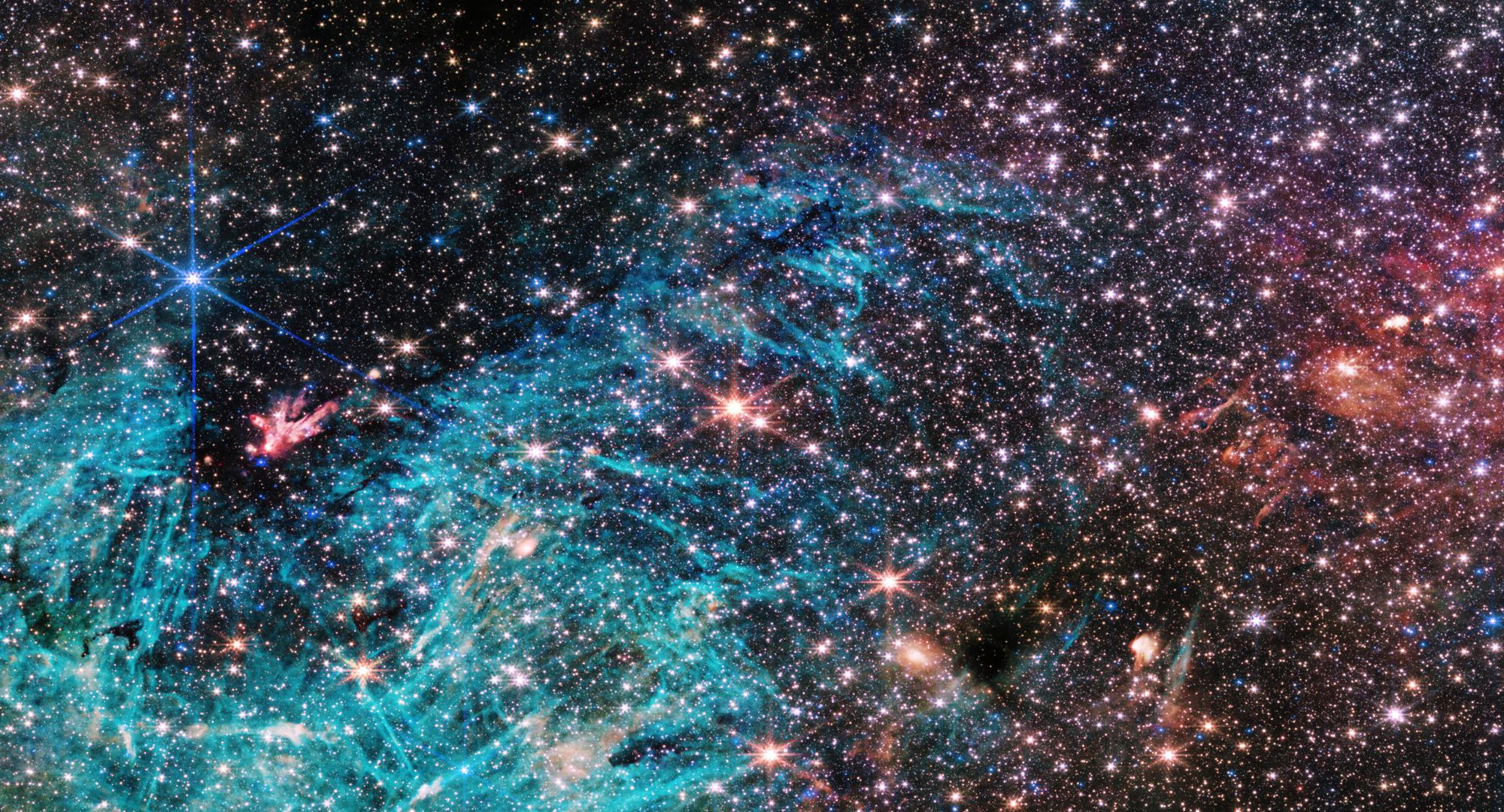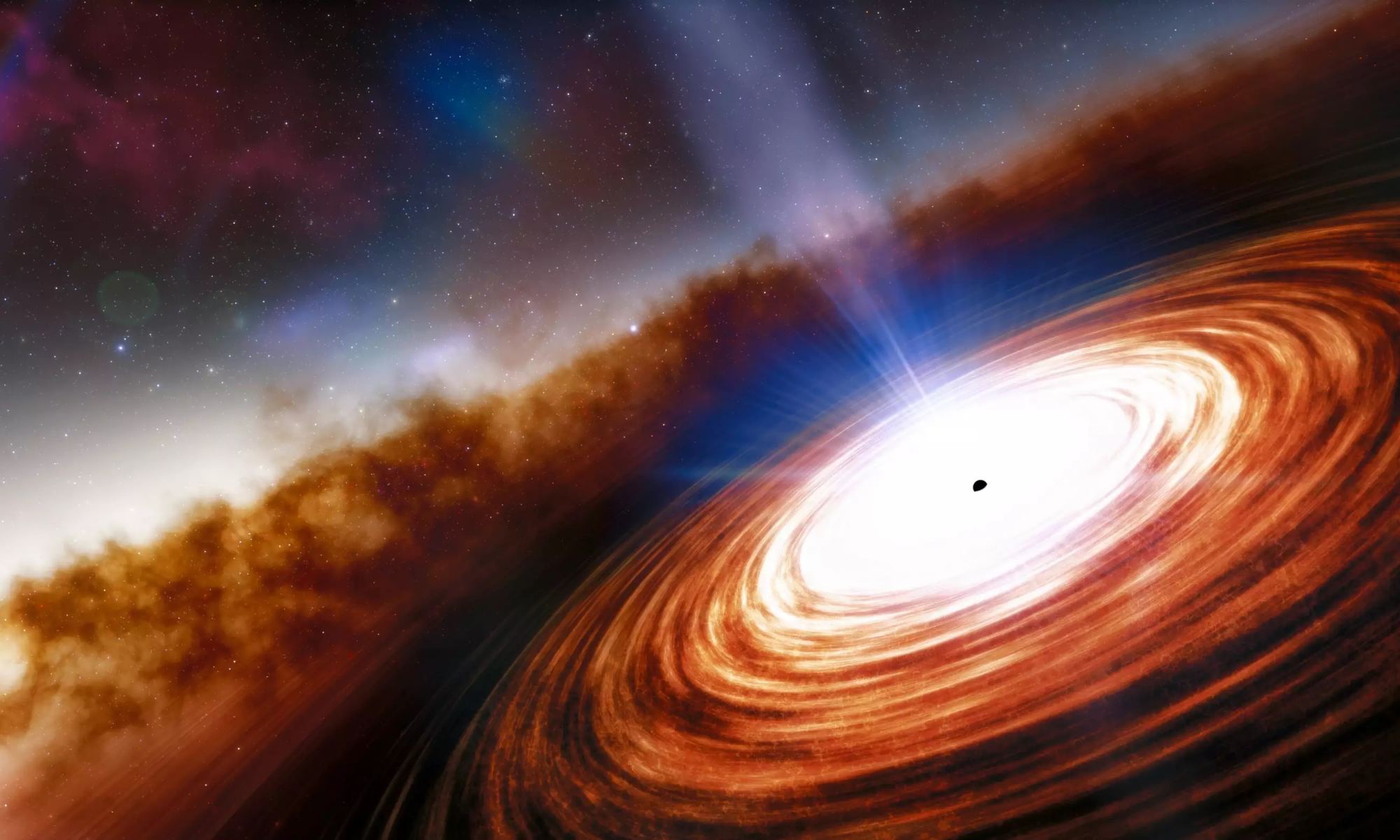Since it became operational almost two years ago, the James Webb Space Telescope (JWST) has produced countless breathtaking images of the Universe and enabled fresh insights into how it evolved. In particular, the telescope’s instruments are optimized for studying the cosmological epoch known as Cosmic Dawn, ca. 50 million to one billion years after the Big Bang when the first stars, black holes, and galaxies in the Universe formed. However, astronomers are also getting a better look at the epoch that followed, Cosmic Noon, which lasted from 2 to 3 billion years after the Big Bang.
During this time, the first galaxies grew considerably, most stars in the Universe formed, and many galaxies with supermassive black holes (SMBHs) at their centers became incredibly luminous quasars. Scientists have been eager to get a better look at galaxies dated to this period so they can see how SMBHs affected star formation in young galaxies. Using near-infrared data obtained by Webb, an international team of astronomers made detailed observations of over 100 galaxies as they appeared 2 to 4 billion years after the Big Bang, coinciding with Cosmic Noon.
Continue reading “Supermassive Black Holes Shut Down Star Formation During Cosmic Noon”
